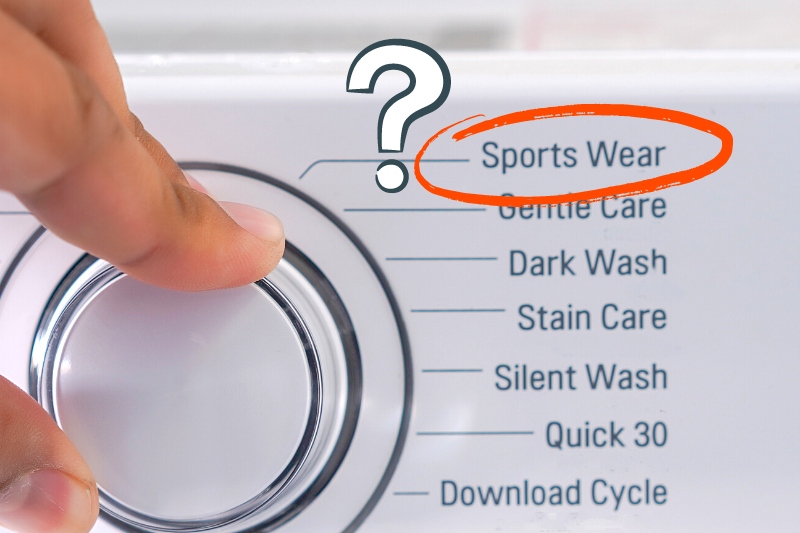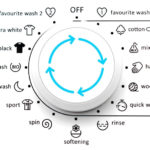If you work out or play sports a lot, you may have wondered how to clean your sports gear to keep it in the best condition.
Many modern washing machines have a sports cycle setting, which might also be labelled as an active wear or sportswear setting, but is it better than a normal cycle?
In this article, we take a look at how the sports cycle works and how to keep your sportswear fresh.
What Is a Sports Cycle on a Washing Machine?
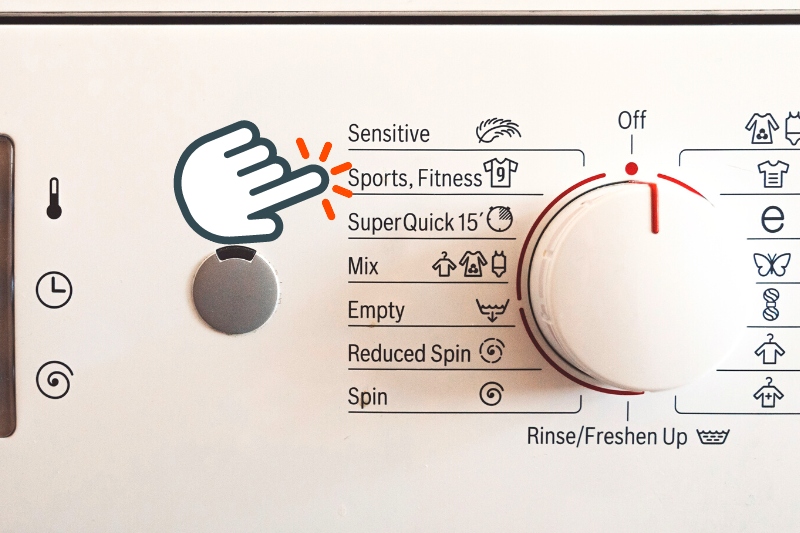
The sports cycle is designed to get your sports gear clean, without ruining the fabric.
Sports clothes get sweaty and, over time, can develop odours that are difficult to remove. Not to mention, sweat can stain lighter coloured clothing.
In addition to this, sports clothing is made from fabrics that are quick-drying, such as polyester, Lycra and nylon.
When you’re sweating a lot in your workout gear, you don’t want to stay wet. Sports clothes stop this from happening by wicking away the sweat and transporting it to the outer layer to evaporate.
The specifics of the sports cycle vary from machine to machine, so check your user manual.
However, a standard sports cycle cleans clothing on a low temperature of 30°C or 40°C with a slow spin speed of about 800-1200 rpm.
It usually takes about 80 minutes, which is substantially shorter than a cotton cycle, which can take over 200 minutes.
The low temperature helps ensure that the fabric doesn’t get damaged, as the elasticity in these fabrics is prone to shrinking in heat.
Sports cycles are usually designed for smaller loads, of about half the washing machine’s capacity.
For example, if you have a 7 kg washing machine, you should only wash about 3-4 kg of sports clothes on this cycle at once.
How to Wash Sports Clothes
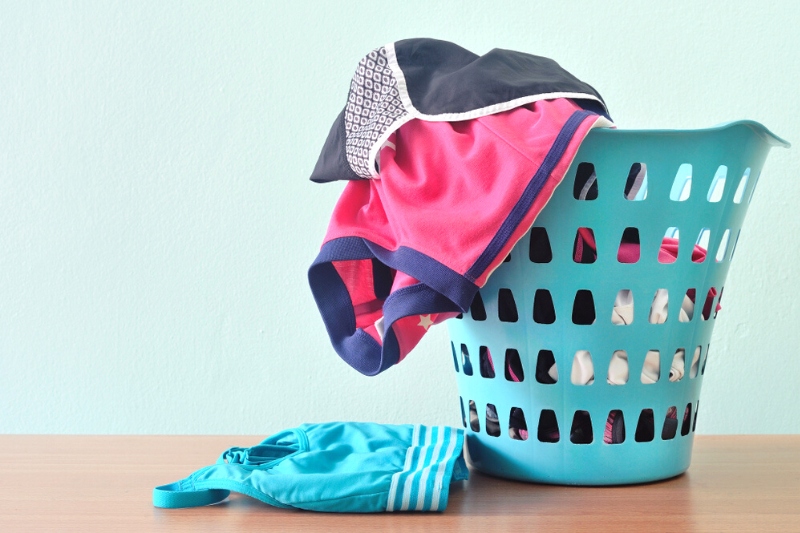
Besides choosing the sports cycle, there are a few other ways you can ensure that your sports gear gets squeaky clean without becoming damaged.
- Dry clothes fully before putting them in the laundry basket. Damp clothes can grow mildew if they’re not aired out properly.
- Turn your clothes inside out. This will expose the parts that have been in contact with your body directly to the water and detergent.
- Choose a detergent for sportswear. These detergents are designed to remove body odour and sweat stains, while preventing damage to the fabric.
- Don’t use fabric softener as this can build up on the absorbent layer of the clothes. If this layer gets clogged, the moisture wicking is less efficient.
- Put sports bras in a mesh wash bag as the clasps can snag on other clothes causing holes.
- Air dry instead of tumble drying. This will stop the fabrics from becoming damaged when exposed to a high temperature.
If your sportswear still smells after washing, pre-soak it in vinegar before washing. Mix a half a cup of vinegar with around 4 gallons (15 litres) of water and submerge your clothes in the water for around 30 minutes and machine wash as normal.
What Can You Use Instead of the Sports Cycle?
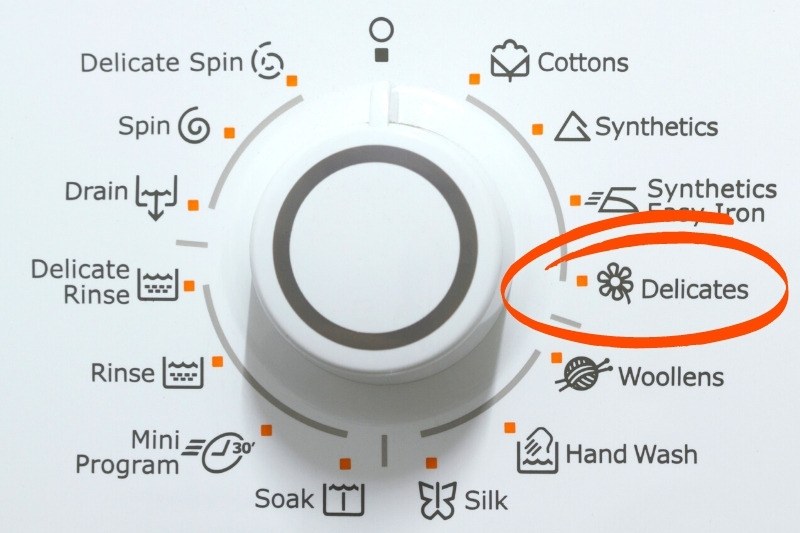
If you don’t have a sports cycle on your machine, you could use the delicates cycle, or any other cycle that has slow spin speeds and low temperatures.
Sports cycles are designed to be washed with light loads that only fill the washing machine about halfway. This means that you don’t need to wait until you have a full load of washing before using it.
You could wash sports clothes with delicates and synthetics if you don’t have enough for a half load.
You could also invest in more sports clothing so that you have enough to run a washing cycle just for your sportswear. This may seem drastic, but having more sports clothes means that you will wash them less often, so they will last longer.

In The Wash is your guide to the best laundry and cleaning products, tips and tricks. Our mission is to solve the UK’s cleaning and laundry dilemmas!
